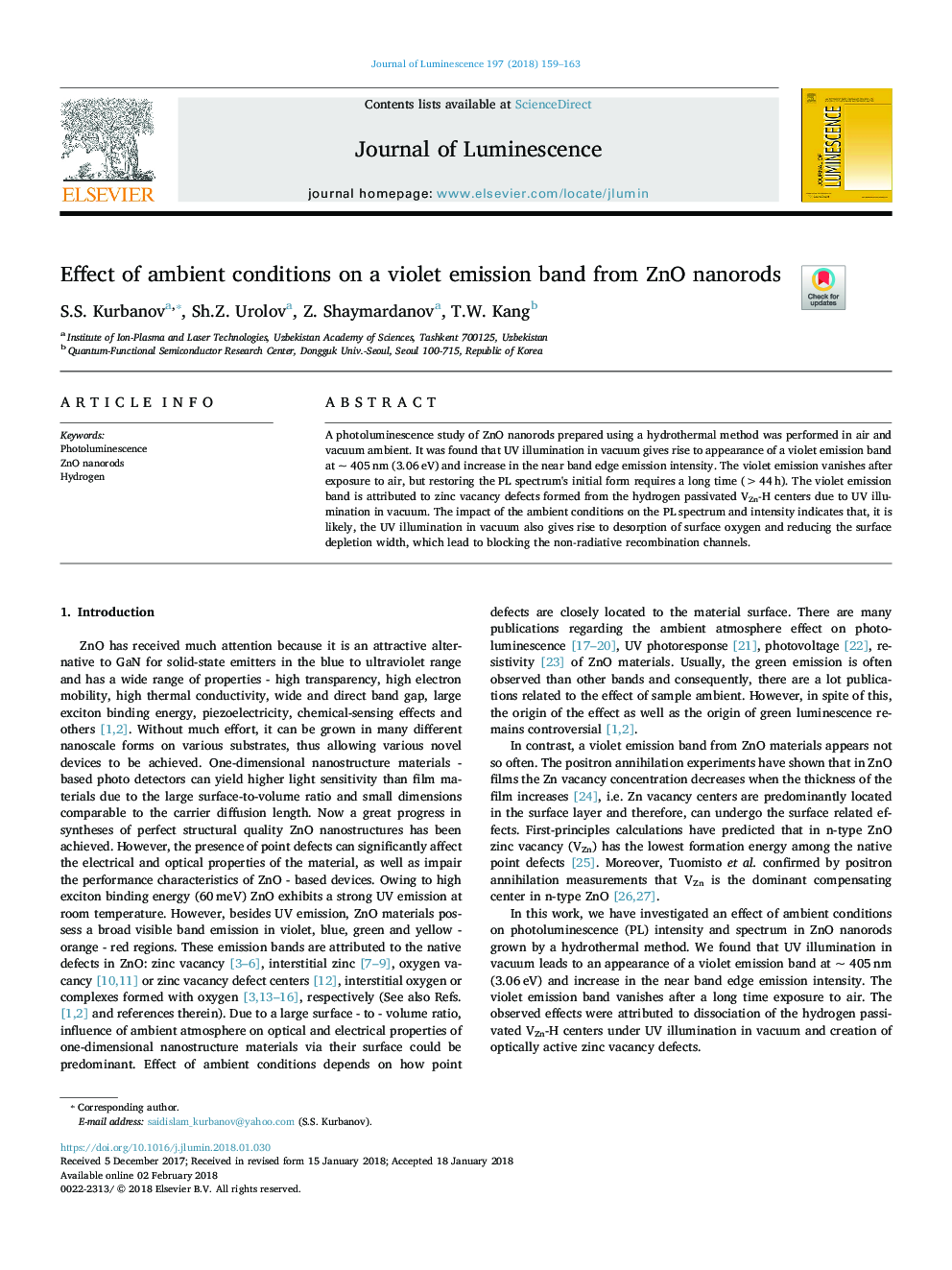| Article ID | Journal | Published Year | Pages | File Type |
|---|---|---|---|---|
| 7840184 | Journal of Luminescence | 2018 | 5 Pages |
Abstract
A photoluminescence study of ZnO nanorods prepared using a hydrothermal method was performed in air and vacuum ambient. It was found that UV illumination in vacuum gives rise to appearance of a violet emission band at ~ 405â¯nm (3.06â¯eV) and increase in the near band edge emission intensity. The violet emission vanishes after exposure to air, but restoring the PL spectrum's initial form requires a long time (> 44â¯h). The violet emission band is attributed to zinc vacancy defects formed from the hydrogen passivated VZn-H centers due to UV illumination in vacuum. The impact of the ambient conditions on the PL spectrum and intensity indicates that, it is likely, the UV illumination in vacuum also gives rise to desorption of surface oxygen and reducing the surface depletion width, which lead to blocking the non-radiative recombination channels.
Related Topics
Physical Sciences and Engineering
Chemistry
Physical and Theoretical Chemistry
Authors
S.S. Kurbanov, Sh.Z. Urolov, Z. Shaymardanov, T.W. Kang,
